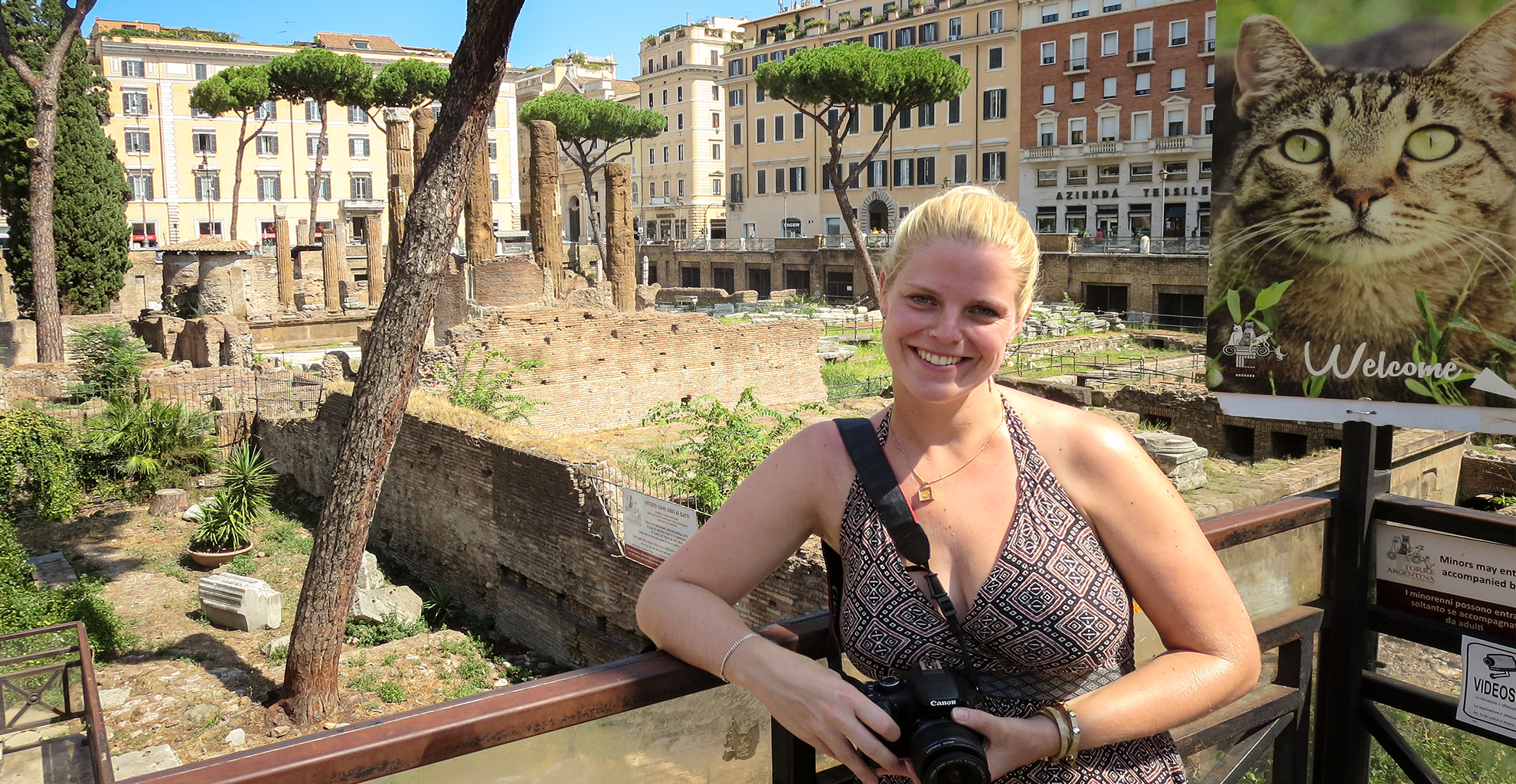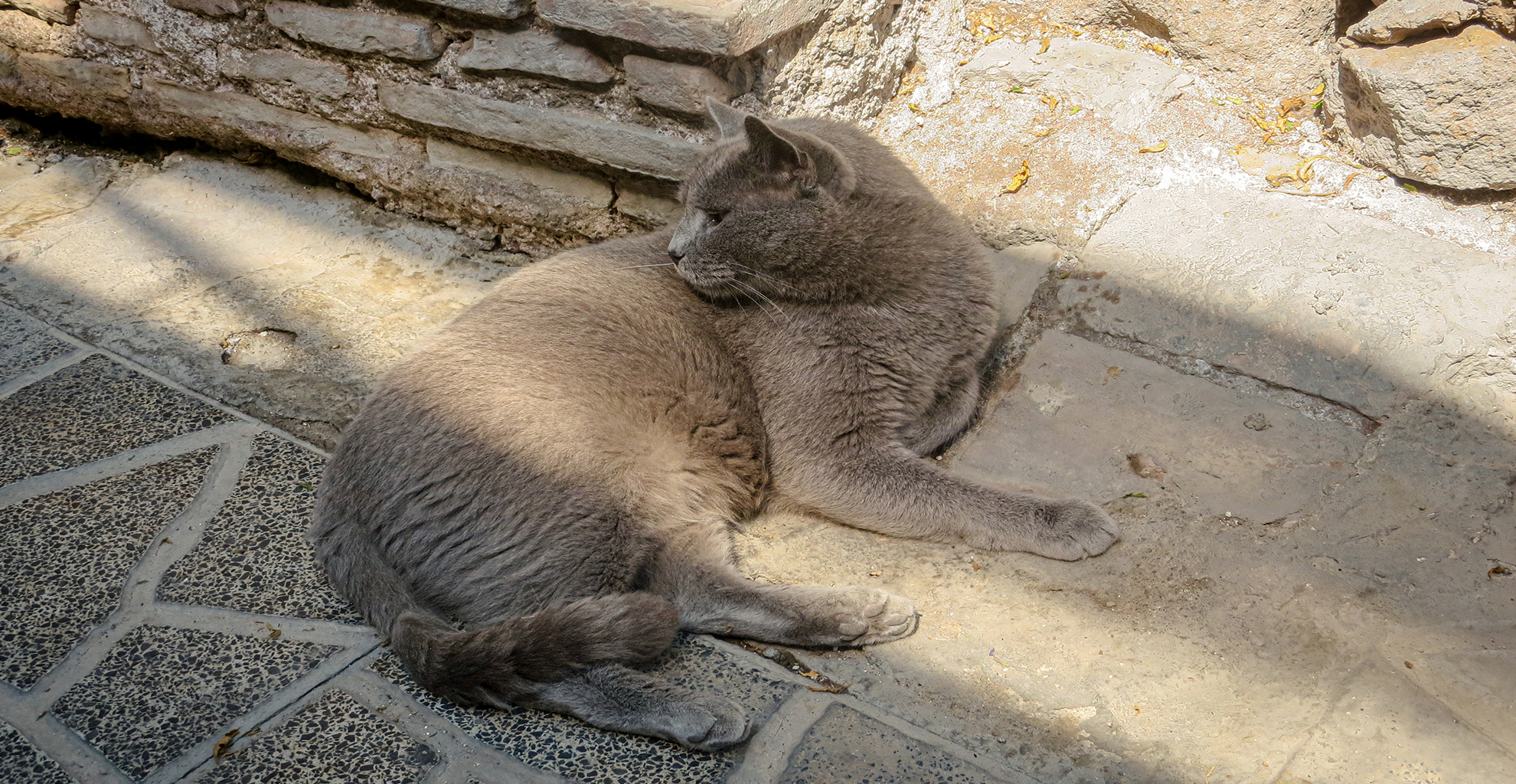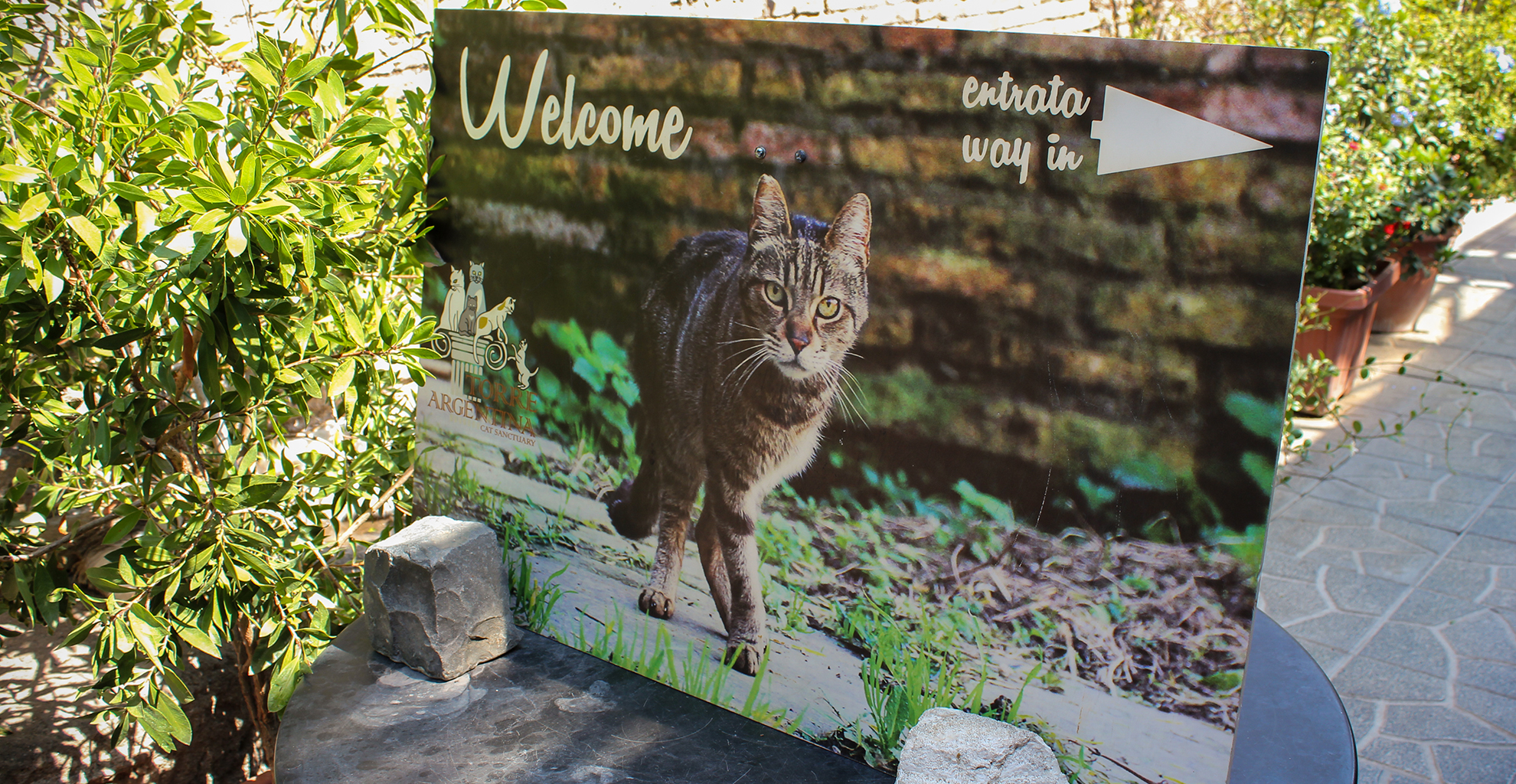Cat Sanctuary in Rome
Cat Colony "Torre Argentina Cat Sanctuary" in Rome - Help the street cats of this world!
On vacation in Rome we made an interesting discovery. On the way to Campo de’ Fiori we passed Largo di Torre Argentina. Fascinated by the ruins, we also noticed that cats were resting in the shade. Lots of cats. At second glance we recognised a poster for the “Torre Argentina Cat Sanctuary”. A cat station that was founded in 1993 to take care of abandoned cats from the temple ruins of Rome, to feed them, to provide them with medical care and to mediate again. As in other parts of the world, the problem of the steadily growing population of street cats also exists in Europe. Volunteers from the Torre Argentina Cat Colony grant asylum to stray cats. Sick cats are caught, cared for, getting vaccinated, examined for cat aids (FIV) and feline leukemia (FeLV), sterilised or neutered.
Only neutered cats are ready for adoption. Even if it sometimes seems like an almost endless fight against all the new cats in need, this station does something good. Hundreds of cats of all ages, some with disabilities, have already been adopted by nice families and cat lovers. In my opinion, this unconditionally effort and work is an incredible benefit that everyone should support or at least know about!
If you want to find out more about the Cat Colony in Rome, visit their website. You will gain an interesting insight about the history of the foundation, their work and further information about adoption procedures as well as long-distance adoptions and donations.

Why does the cat population steadily grow?
Female cats, also known as queens, become sexually mature at 6 to 10 months. In the heat phase, which lasts about 5 days, they leave behind attractants, so-called pheromones, which attract male cats, also called toms or tomcats, over long distances. Males are reproductive a little later from 8 to 10 months. But both sexes are mature on a really early stage in life. At first the queen cat defends herself against mating, which is then often tempered in a game until she is ready to mate. If she is not, even a bite in her back or neck to force her mating doesn‘t help in every situation. It can turn into a serious fight. If successful, a cat's big belly can only be seen in the last third of pregnancy, which takes 58 to 65 days in total. The teats are slowly changing color. She will give birth to 4 til 6 young kittens, sometimes up to 7 and very rarely even up to 8 youngborns. Cats can mate three times a year, which explains the high reproductive rate and ultimately high population rate of cats, especially uncastrated street cats, worldwide.
The problem of “homeless” cats is also growing in Germany. With approximately 2 million street cats, cat protection campaigns such as the German Animal Welfare Association (Deutscher Tierschutzbund e.V.) call attention to the importance of castrations for reducing the number of street cats in need.
In addition to the constant increase, cats and other pets such as dogs are often abandoned. This is not always entirely voluntary. Financial problems are often the reason. Many veterinary practices insist on immediate payment, but there are always exceptions. If keeping your own animals is becoming more and more expensive, installment payments for veterinary care in certain veterinary practices are often possible by arrangement. You should compare the prices of different veterinarians. So that nobody feels compelled to have to put their beloved animal on the street, there is the possibility to visit animal boards. A list of German animal boards are available here.
Food banks and animal shelters as well as animal welfare associations in the region offer programmes, where they take care of animal health, if the animals have chronic diseases. Financial support is not always possible, but valuable tips and recommendations can be helpful to avoid giving the animals directly to already crowded animal shelters or leaving them with no food or any protection on the street.
Voluntary veterinarians often offer their help up to twice a year in newspaper advertisements. Neccessary castration or medication for financially weak pet owners can be carried out free of charge, financed by donations. Find out what kind of possiblities are available in your town, district, local authority or city because I am pretty sure that this differs significantly within our countries.

How can we help?
We can support animals in need with donations of any kind such as food supply, equipment such as cat litters, food bowls, leashes, toys and blankets and also with some pocket money we might have left after running our own groceries. Some supermarkets and stores offer food boxes where we can donate just bought goods for animals. We can also help and support nearby animal shelters, sanctuaries and associations with memberships, sponsorships and volunteering. We can also get active by helping out with collecting donations, distributing flyers and doing some advertisements for local animal institutions.
A little reminder in case you still have any doubts: Donations are tax-deductible!
What is even more important!
Be aware which long-term commitments you need to take when you want to care for an animal. Either cat or dog, the costs of food, medical care and routine tests and vaccinations are expensive when comparing it to the age your future pet can reach. Also get enough information about the animal breed you are responsible for. There are animal breeds that become more quickly susceptible to hereditary diseases than others. Are they physically restricted? How much time, space and education do you need to invest to ensure animal welfare?! Your pet will be a part of your family. Make sure he lacks nothing.
Our four-legged friends urgently need help!
Have you ever thought of an adoption or sponsorship? Have you ever been to a local animal shelter? Without addressing the question of whether one has the right to incapacitate a living being, do you believe that we can successfully reduce the number of street cats (and dogs) through neutering? Do you have pets yourself? How do you feel about voluntary helpers of worldwide cat stations in general? Would you like to help or already did?
Share your thoughts and experiences from your daily life with your pets or from the important work of voluntary helpers in animal shelters and sanctuaries. Leave a comment below or write me an Email to info@wildsweetwild.com or use the Contact Form.
Have fun and take care, Animal Lovers!

